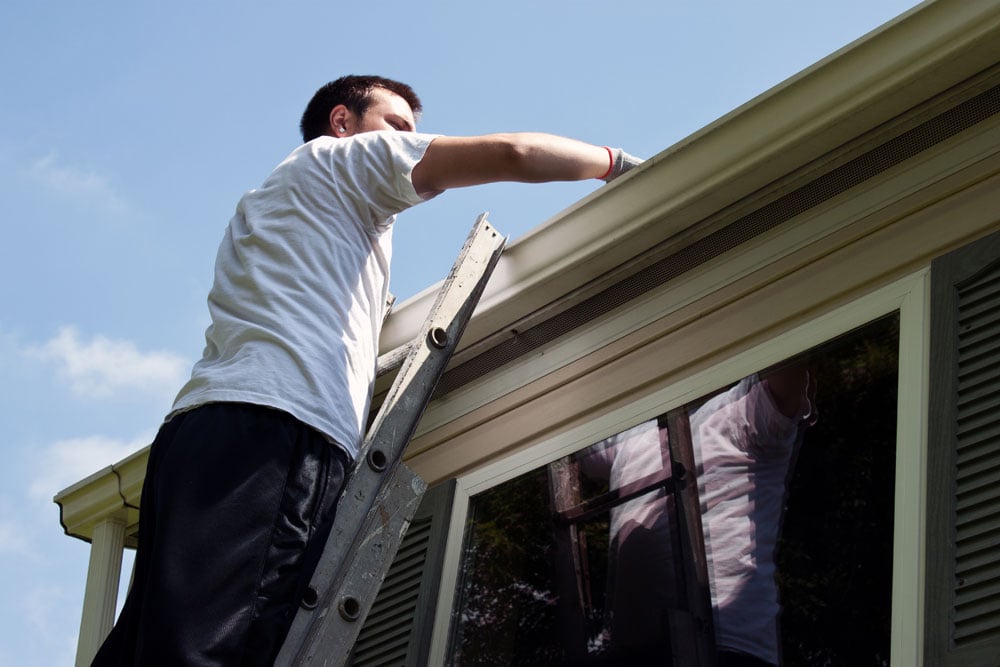Share this
Roof Spring Cleaning Checklist
by Michael Wilhelm on Mar 2, 2020 8:11:01 PM
1. Inspect Your Roof Shingles
Most residential homes use shingles as the first line of defense. When you are inspecting your shingles there are a number of things to watch out for. If you don’t feel comfortable getting on your roof, we recommend inspecting your roof from the ground. However, your inspection from the ground will not be as thorough as an inspection made while on the roof. If you’re not comfortable getting on your roof we recommend you contact your local roofer. Getting on your roof can be dangerous, and should be avoided if you do not feel comfortable or have experience. Here is what to look for:
- Missing shingles — If you notice any missing shingles it is important to get them replaced immediately. A missing shingle exposes your roof’s underlayment and increases the risk of leaks, mold, and rot.
- Curling shingles — Curling shingles are often the result of improper installation or poor ventilation. If you see any curling shingles, we recommend getting them fixed to avoid further damage.
- Stained shingles — Stains or signs of streaking both indicate there is a leak somewhere in the roof’s ventilation system. This is another issue where we recommend you contact a roofing professional so the underlying source of the problem can be properly addressed.
2. Clean Your Gutters
After the winter months have passed, chances are debris has accumulated in your gutters. Cleaning your gutters is important for maintaining the integrity of your roof, and delaying a roof replacement. If the draining system isn’t working properly then it’s likely your shingles will be more vulnerable to damage.
The first step to cleaning your gutters is to remove any visible debris. Be sure to get a sturdy ladder, and follow any safety recommendations. Once you have cleaned all of the visible areas, move to your downspout. The downspouts are one of the most important parts of your gutter system as they are responsible for draining water off and away from your home. This section of your gutters can be a bit more complicated to clean. For this hard to reach area, try using a hose or a plumbers snake. If all else fails, take the system apart, find the source, and put it back together.
3. Look for Mold
When examining your roof, keep an eye out for any signs of mold or mildew. If caught early, fixing mold issues can be easy. If it is not caught early, mold and mildew can progress into the foundation and cause major problems. If found, you can try an at-home remedy like lead control strips or use zinc on the affected areas. If the mold has covered a large area, call a roofing professional for a more thorough inspection. It’s important not to take chances with mold. If it spreads to the interior of your home it can be dangerous.
4. Trim Surrounding Branches
Believe it or not one of the biggest threats to your roof are trees. Overgrown branches can compromise the integrity of your roof. The best way to mitigate any damage from surrounding yard trees is to trim the branches. This can be a dangerous job if you don’t have the proper equipment, or if you have hard to reach areas. In these cases, we recommend calling a professional arborist or landscaper.
5. Don’t Forget the Attic
Often an overlooked step is checking the inside of your attic for any damage. Go into your attic and look for any sources of light. In cases where light is coming through it is likely that you have a hole in your roof. You should also look for any water damage and mold. If you do not visibly see anything, but you do smell something like mold, don’t ignore it. Call a local roofing company, so they can give you a more thorough inspection and pinpoint the source of your problem.
It is important to clean your roof every Spring to lengthen the lifespan of your roof. If any issues arise during your inspection, call Holladay Grace Roofing: 719-596-0733 and they will get your roof issue resolved.




No Comments Yet
Let us know what you think